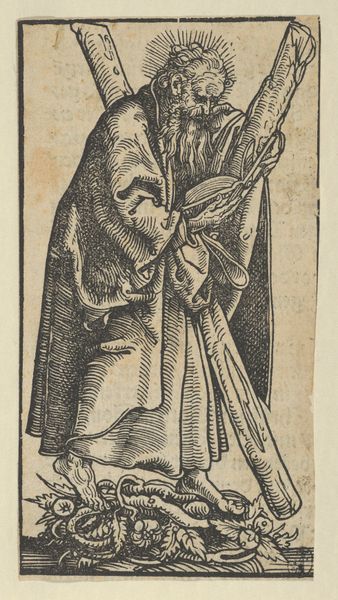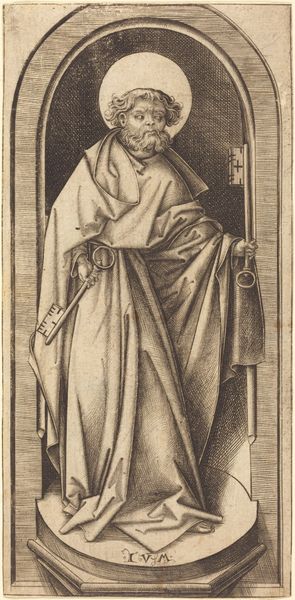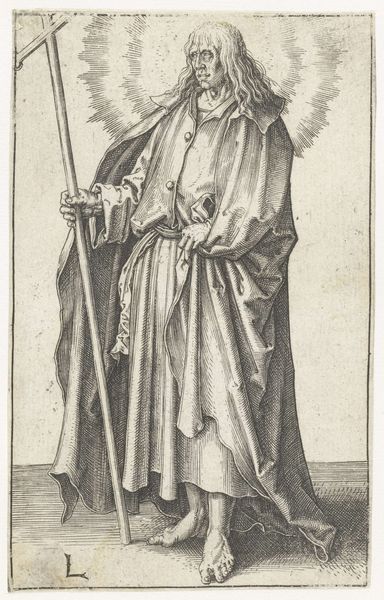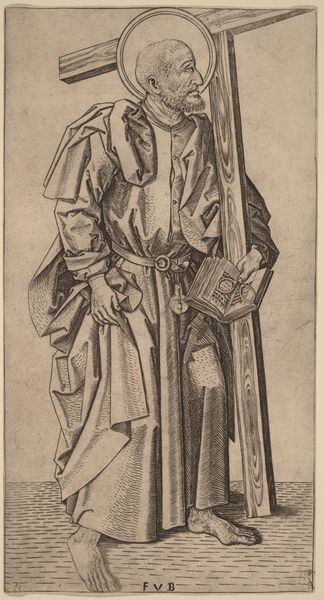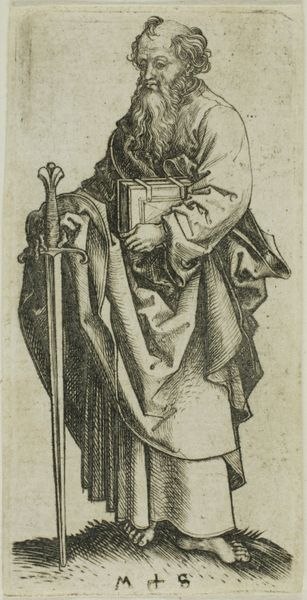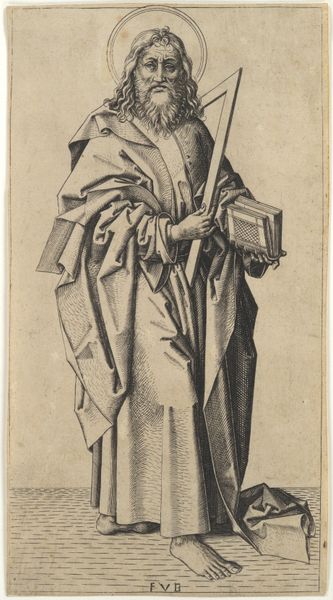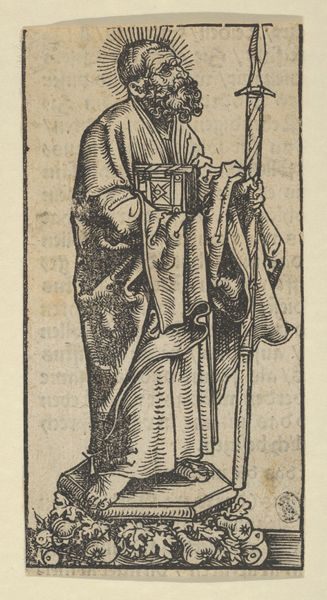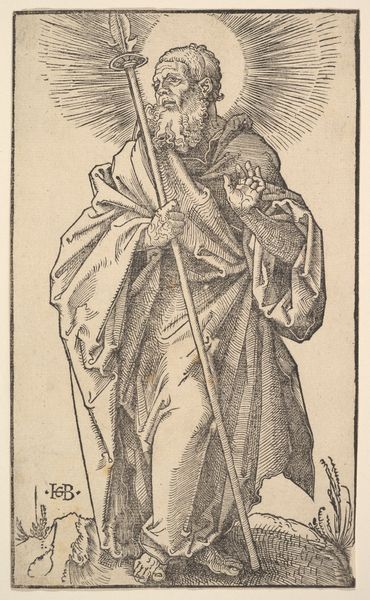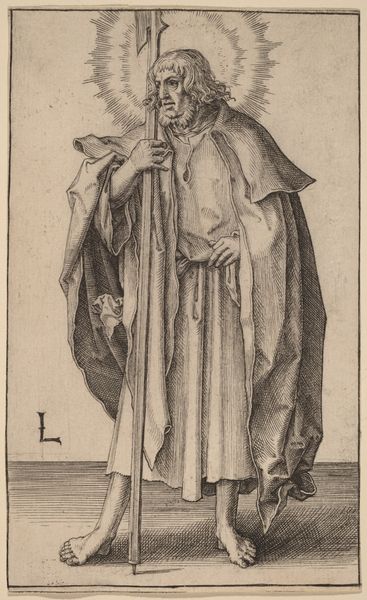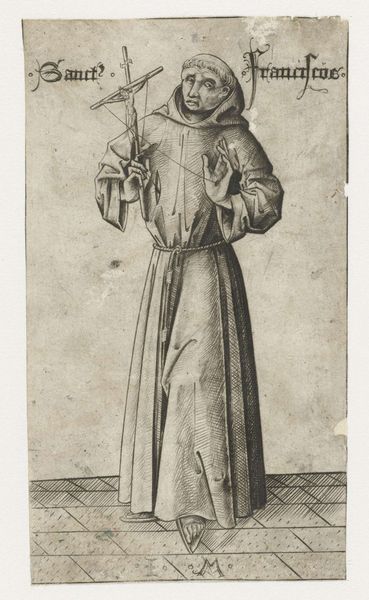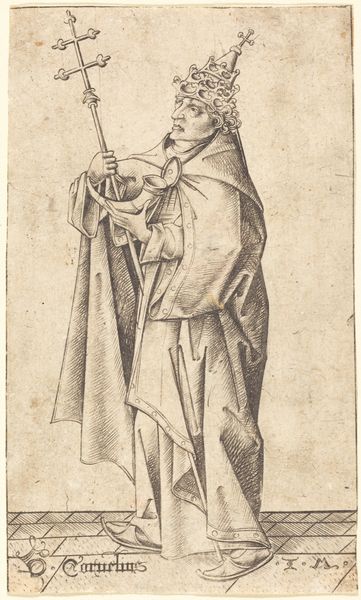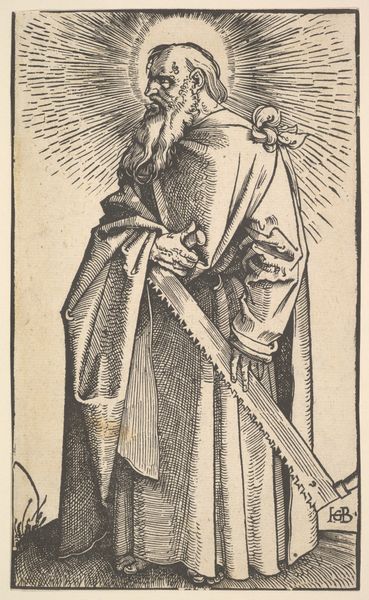
drawing, print, engraving
#
portrait
#
drawing
#
medieval
# print
#
figuration
#
12_15th-century
#
line
#
portrait drawing
#
history-painting
#
northern-renaissance
#
engraving
Copyright: Public Domain
Curator: What a wonderfully solemn depiction. This is "Saint Philipp" from the "Apostles" series, dating back to somewhere between 1440 and 1460. It's an engraving, and we're fortunate enough to have it here at the Städel Museum. Editor: You know, immediately, I’m struck by the stillness in his eyes. It feels like a concentrated interiority, almost as though he's listening intently to some unheard divine whisper. A very peaceful image, although the books and cross give it some austerity. Curator: Yes, Philipp's attributes tell us a great deal. He carries the book, a symbol of the Gospel he preached, and the cross, representing his martyrdom. These objects are incredibly significant because they reinforce not only the role of religious figures as intermediaries between humanity and God, but also reflect established virtues in the period of Late Medieval and Early Renaissance culture. Editor: The texture of his robe is compelling— all those exquisitely detailed lines! It conveys both a physical presence and a kind of spiritual weight. Does the rendering give any insights to you, regarding the artist's inspirations, time period, cultural echoes? Curator: Certainly. The artist's use of line in this engraving speaks volumes about the stylistic transitions happening at the time. Note how linear patterns were designed not only to describe surfaces but also to create visual and emotional focus. I would argue, actually, that its aesthetic significance may speak even more clearly about this specific time period than some oil paintings might. Editor: An artful way to render the holy visible and accessible. What are your lingering thoughts regarding the imagery and symbols present here? Curator: Ultimately, images like "Saint Philipp" provide continuity across centuries. Even for us, far removed from its original context, there is immediate insight on the symbols used to communicate virtues, status, and a set of cultural values in Late Medieval and Early Renaissance societies. It remains a potent portrait. Editor: Absolutely, what a reminder about our shared humanity that bridges centuries of visual language and belief. What started off as what appeared to be austerity has shown how cultural significance lives on, despite changes in its context!
Comments
stadelmuseum about 2 years ago
⋮
The two extremely rare engravings of the Apostles Philipp and Bartholomew (33626) are from an apostle series possibly produced as early as the 1440s and only partially extant today. The engraver went about his work in the manner of a pen drawing, with deep contours and scratched-in clusters of lines for the shadows serving to model the shapes. He characterized his apostles with eloquent, lifelike details, for example Bartholomew’s well-worn shoes.
Join the conversation
Join millions of artists and users on Artera today and experience the ultimate creative platform.

